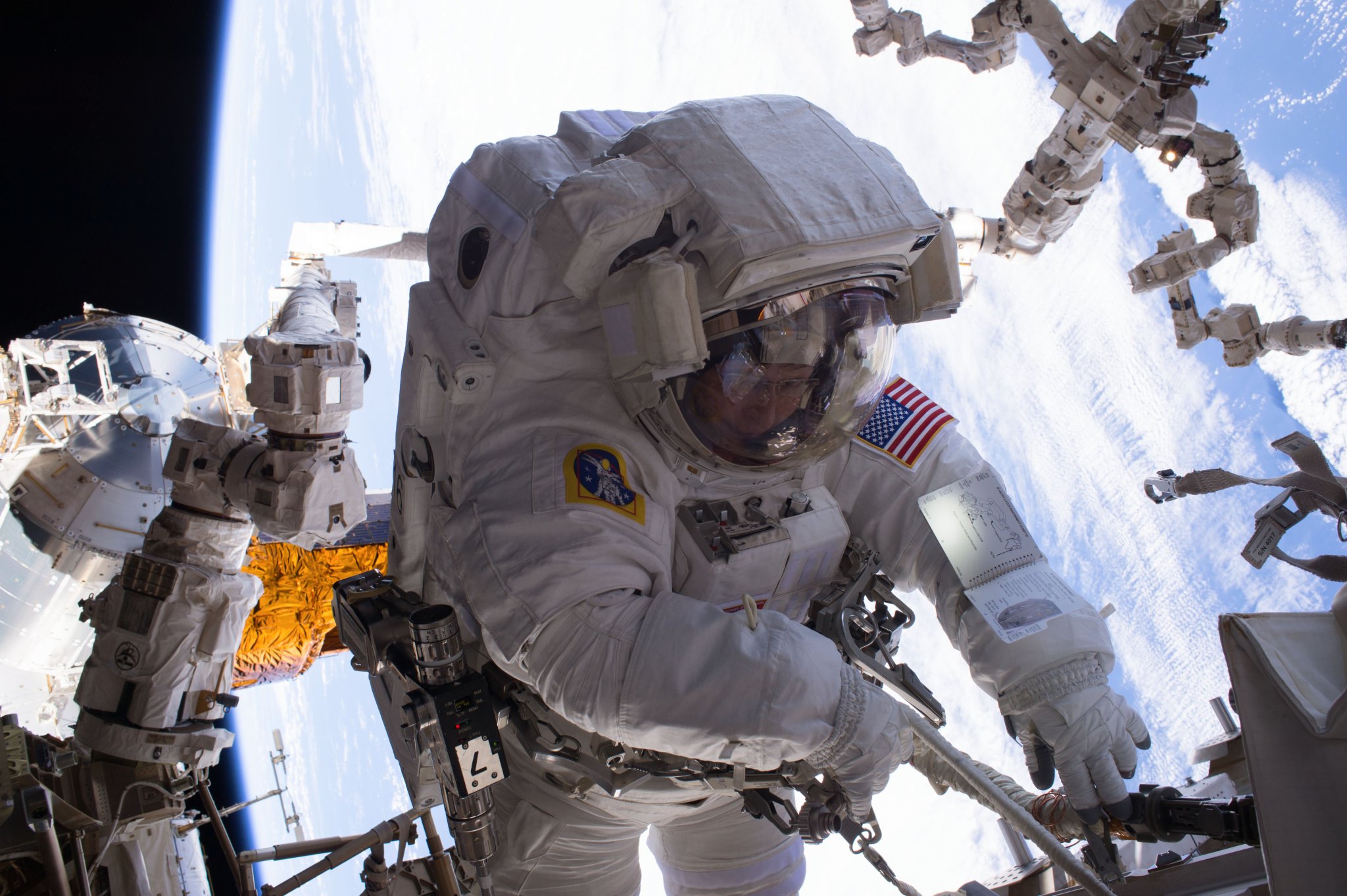French astronaut Thomas Pesquet performed his first spacewalk on Friday with the objective of upgrading the ISS power system, mainly by installing new massive lithium-ion batteries.
Pesquet was joined by American astronaut and mission commander Shane Kimbrough, marking the start of the mission at 11:22 Global Meridian Time, half an hour earlier than it was initially planned. The spacewalk had the astronauts install adapter plates for three 428-pound batteries, all in just over six hours. The batteries will help the ISS maintain its power during the time it floats under the Earth’s shadow.

A total of 48 batteries are located at the station, but only 24 need to be replaced with newer versions as subsequent spacewalks take place, these being 1 and a half feet tall and 3 feet long and wide.
.@AstroPeggy waits for fellow astronauts to finish spacewalk as they settle back in Quest airlock. https://t.co/L8jk825P95 pic.twitter.com/LSK179tmVX
— Intl. Space Station (@Space_Station) January 13, 2017
Eastern Europeans making history in space
38-year-old Pesquet is the fourth French astronaut to ever walk in space, being the protagonist of the 197th spacewalk for maintenance at the International Space Station.
On mission control, there was Luca Parmitano, the Italian astronaut in charge of communications for the mission. Parmitano performed two spacewalks himself back in 2013; in one of the spacewalks, his helmet suffered a malfunction and had water leaking in, forcing him to go back in the station as an emergency. Both Parmitano and Pesquet are friends from the European Spae Agency.

The astronauts were assisted by Dextre, the ISS’s robot. Dextre was operated from Houston to provide an additional degree of safety as it helped remove the decade-old batteries and situated the newer ones for installation.
The batteries appear to be critical for the ISS, as NASA assures that at least 18 additional batteries need to be exchanged over the course of the following three years. Another set of batteries is expected to arrive sometime in 2017. The older batteries will be disposed in the atmosphere alongside the Japanese ship that helped them be carried over to the International Space Station.
Expedition 50 has several research objectives before they return to Earth on March 4, 2017. One of them is to research tissue regeneration-bone defect, trying to understand why vertebrates such as rodents and humans cannot regrow lost bone and tissue. The main purpose is to analyze how microgravity affects such process, which may provide more information about why humans are unable to regrow a lost limb even when our bodies can suffer morphology changes due to cellular processes. The main reason for this objective is that astronauts often experience changes in bone density and muscle mass, a consequence of a microgravity environment.
Previous research suggests that microgravity helps promote cellular growth, which could be a precedent for tissue regeneration. Being able to regrow limbs would be of immense help and benefit for security officials and military personnel.
Expedition 50 members are also expected to study the effect of light on the circadian rhythm, seeing that astronauts at the ISS tend to see 16 sunrises each day, which most assuredly impacts their sleep schedules. This can reduce sleep quality and impair alertness. The goal is to study how lighting affects the circadian rhythm and to try and find a way to avoid being altered by such external factors.
Source: NASA
